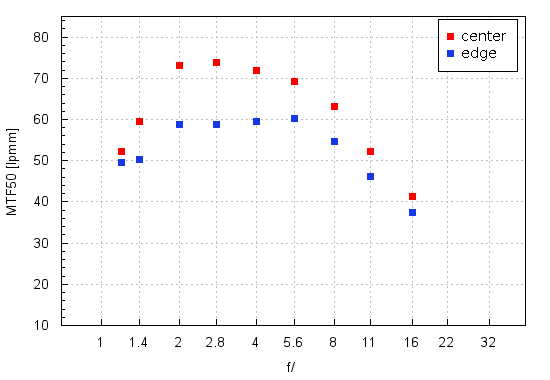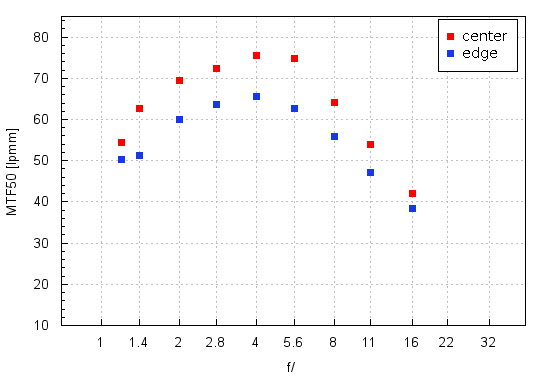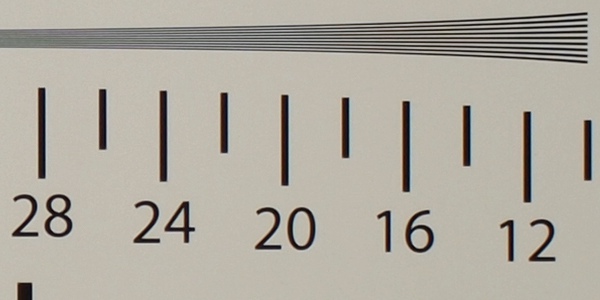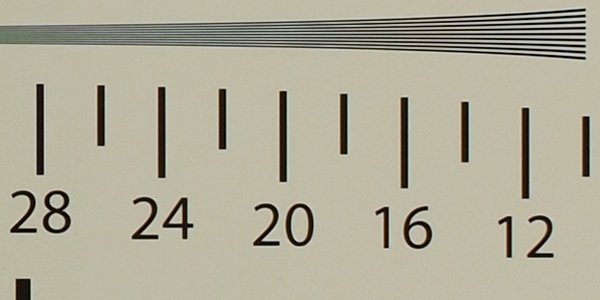Olympus M.Zuiko Digital ED 25 mm f/1.2 PRO
4. Image resolution
Let’s glance at a graph below and check how the tested lens compares in the frame centre and on its edge.

Please Support UsIf you enjoy our reviews and articles, and you want us to continue our work please, support our website by donating through PayPal. The funds are going to be used for paying our editorial team, renting servers, and equipping our testing studio; only that way we will be able to continue providing you interesting content for free. |
- - - - - - - - - - - - - - - - - - - - - - - - - - - - - - - - - - - - - - - - - - - - - - - -
Full usefulness of the lens at the maximum relative aperture is the first important conclusion. Both in the frame centre and on its edge the MTFs keep a level of about 50 lpmm so they guarantee quite decent sharpness. It is a huge achievement. The Voigtlander Nokton 25 mm f/0.95 had similar results in the centre only by f/1.4, and on the edge of the frame by f/2.2. The Panasonic Leica DG Summilux 25 mm f/1.4 ASPH. offered an image quality at its maximum relative aperture similar to the one of the tested Olympus by f/1.4, but it concerned only the centre of the frame. On the edge by f/1.4 and by f/2.0 the MTFs landed below the decency level.
With the stopping down of the aperture the quality of images from the Olympus 1.2/25 improves and reaches a maximum plateau in the f/2.0-4.0 range, with MTFs hovering around 74 lpmm. Unfortunately, such a performance is hardly impressive – at that point the Voigtlander was able to exceed 80 lpmm and the Panasonic 1.4/25 got to 75 lpmm.
It seems that, in the case of the Olympus, the resolution records in the frame centre weren’t exactly a priority. Its performance and its complex optical construction might suggest that the main goal was rather good sharpness across the frame up from the maximum relative aperture. That goal was achieved but the tested lens doesn’t break any resolution records. Still, contrary to other standard Micro 4/3 lenses, it doesn’t have any weak points in this category either.
To make our test complete we also present a resolution graph based on results from the Olympus O-MD E-M5 Mark II.

It would be difficult not to comment on that as the graph differs a bit from the one based on results from the Olympus E-PL1. A tad higher maximum MTFs are not a surprise, after all the sensor is more densely packed. A different shape might be strange, though. Maximum MTFs in the centre are reached by f/4.0 and f/5.6 and the graph showing the performance on the edge of the frame features a very distinct peak, without the plateau we observed before.
It seems two factor contributed to that. First, the astigmatism, field curvature and other off-axis aberration, make the horizontal and vertical MTFs of the tested Olympus very different; what’s more those differences increase sharply when you move away from the frame centre. As a result at some apertures MTFs measured at vertical borders can be even two times lower than the MTFs reached at horizontal borders, mainly due to astigmatism and lateral chromatic aberration, keenly felt at that place. Such a performance might deceive the autofocus of a camera – it doesn’t know what interest us more, sharpness at vertical or at horizontal borders. The differences stem from the fact that our E-M5 Mark II test was based only on measurements we got with automatic focusing. In the case of the E-PL1 test we took from more than a dozen to several dozen photos at every aperture, with autofocus switched on and off, so for the ultimate measurements, we could choose a frame where the sum of vertical and horizontal MTFs was the highest, no matter what was the difference between them. The autofocus, on the other hand, chose bigger compromise between both MTF values so it managed to eliminate the peak in the frame centre by f/2.0-2.8 and, simultaneously, raised MTFs on the edge at its expense.
At the end of this chapter, traditionally, we present crops taken from photos of our resolution testing chart; they were saved as JPEG files along RAW files we used for the analysis above.
| Olympus E-PL1, JPEG, f/1.2 |
 |
| Olympus E-PL1, JPEG, f/4.0 |
 |






